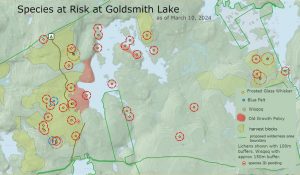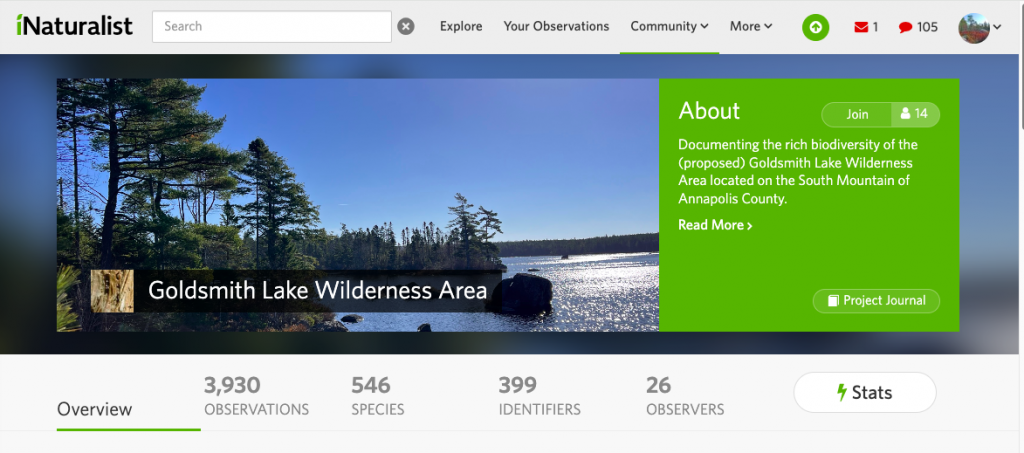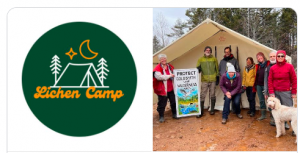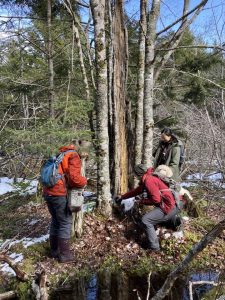 That’s what Forest Protector Nina Newington asked on Day 13 of “Lichen Camp”.
That’s what Forest Protector Nina Newington asked on Day 13 of “Lichen Camp”.
Forty SAR occurrences, 33 of them an old growth forest indicator species, are not enough, it seems, to convince DNRR to give the whole area interim protection while final decisions are made about areas that will be given permanent protection to meet the 20% goal.
Follow the developments at and related to Lichen Camp on the Facebook page for the Friends of Goldsmith Lake Wilderness. For the convenience of those not on FB, key posts are copied (with permission) on a page on this website – see Lichen Camp GLWA 2024
The first post in the Lichen Camp series explains what it’s all about:
Lichen Camp is an unfolding story of determined, respectful, rational, fact-based protest – – with a lot of soul – about issues that affect all of us. It deserves the attention of all Nova Scotians; I expect that over time, it will be clear that most Nova Scotians respect the modus operandi (and perhaps like me, are in awe of it) and fully support the goals of Lichen Camp.
——-
First But Not Last
To explore the wilds of yesteryear,
So pristine and still untamed.
To look across a great expanse,
That’s yet to have a name.To walk atop a mountain,
That overlooks the sea.
Camp in the deepest forest,
Underneath the tallest trees,Where wildlife still abounds,
With streams filled with fish.
To stand under a waterfall,
And breathe the purest mist.Our wilderness is disappearing,
At an ever-alarming rate.
We must take a stand to protect it,
Before it becomes too late.– By Danny Baker, posted on the Friends of Goldsmith Lake Wilderness FB page, Mar 15, 2024.
Copied here with permission.

Frontispiece from the Friends of Goldsmth Lake Wilderness Area FB Page
——-
Related:

Goldsmith Lake Wilderness Area Project on iNaturalist, stats as of Mar 17, 2024
www.saveouroldforests.ca
 The Save Our Old Forests (SOOF) Association is a registered nonprofit based in Kespukwitk, Mi’kma’ki. SOOF has two primary objectives to:
The Save Our Old Forests (SOOF) Association is a registered nonprofit based in Kespukwitk, Mi’kma’ki. SOOF has two primary objectives to:
– To engage the public in helping to protect the forests in keeping with the Government of Nova Scotia’s commitment to protect 20% of Nova Scotia’s lands and waters by 2030; and
-To raise awareness of the ecological importance of protecting forests over 80 years old in particular.


